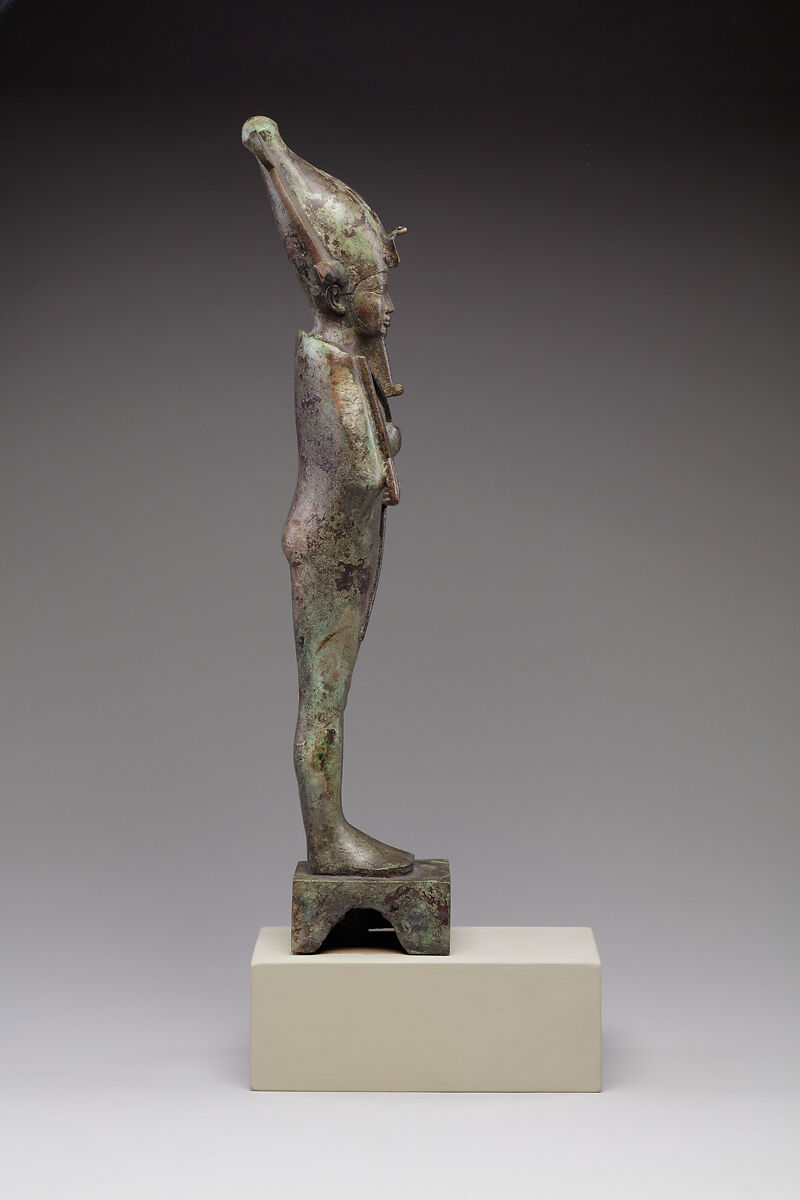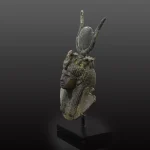Statuette of the god Osiris
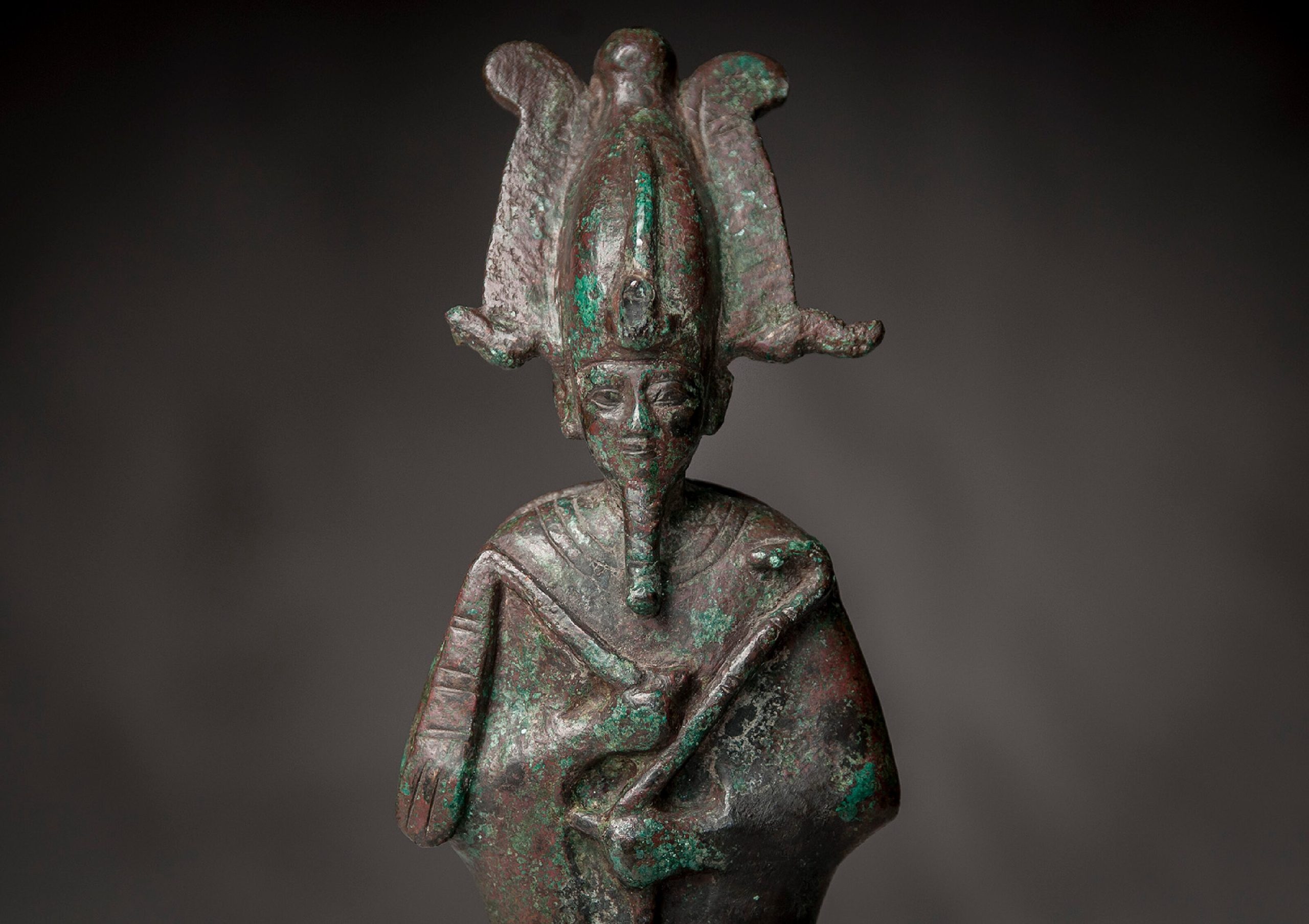
The upper part of a leaded bronze statuette of the god Osiris , dating to 664–332 BCE during Egypt’s Late Period (Dynasties 26–30) . Depicted as the 𝘮𝘶𝘮𝘮𝘪𝘧𝘰𝘳𝘮 god of the afterlife, Osiris symbolizes rebirth and eternal order. This finely cast piece, measuring 45.7 cm in total height, is now housed in the Metropolitan Museum of Art, New York
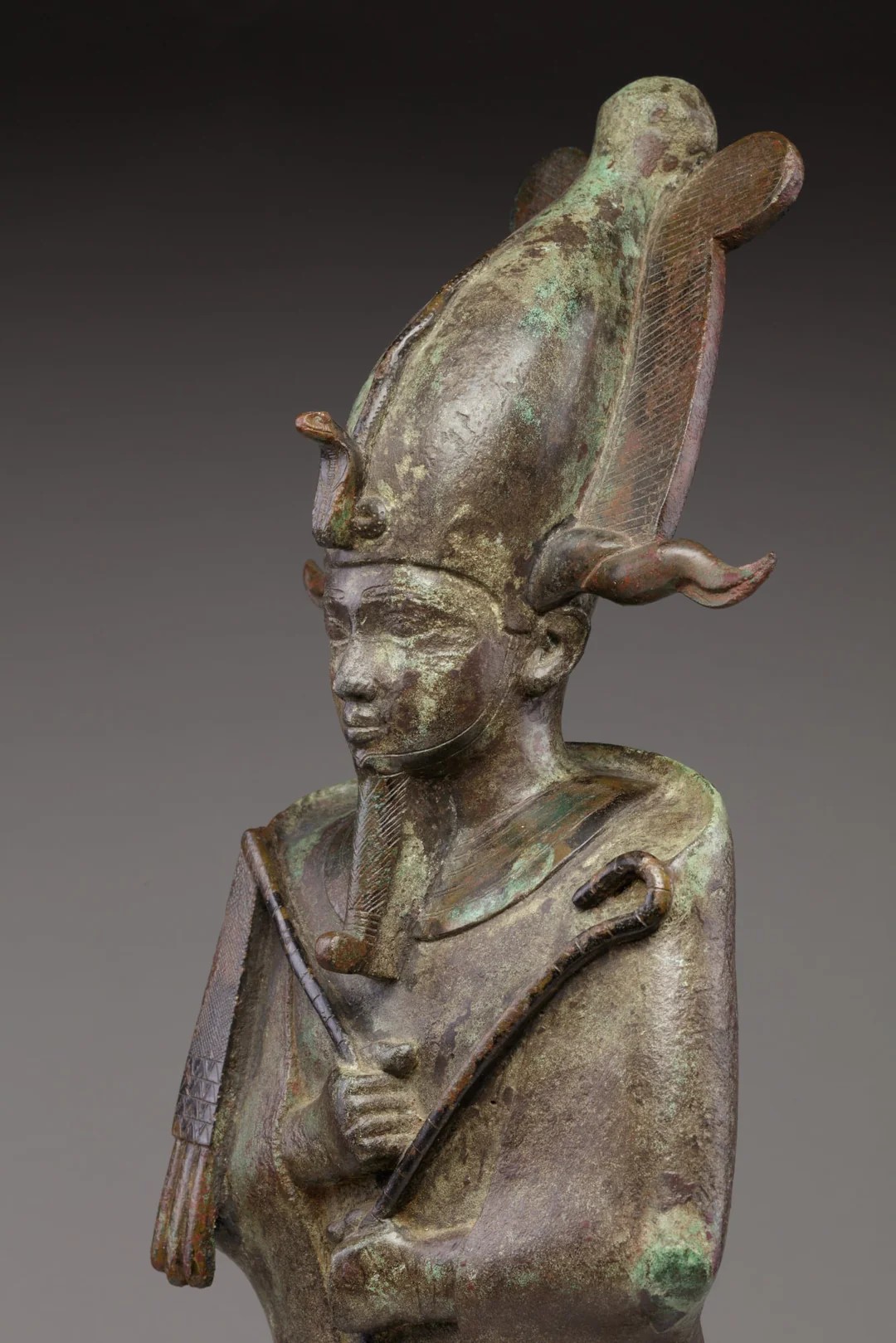
Osiris, the Egyptian god of the dead, is most often depicted as a shrouded mummy, emphasizing his connection with the deceased. He holds a flail and a shepherd’s crook, symbols of Egyptian kingship, and wears a long, braided beard, emblematic of divinity.
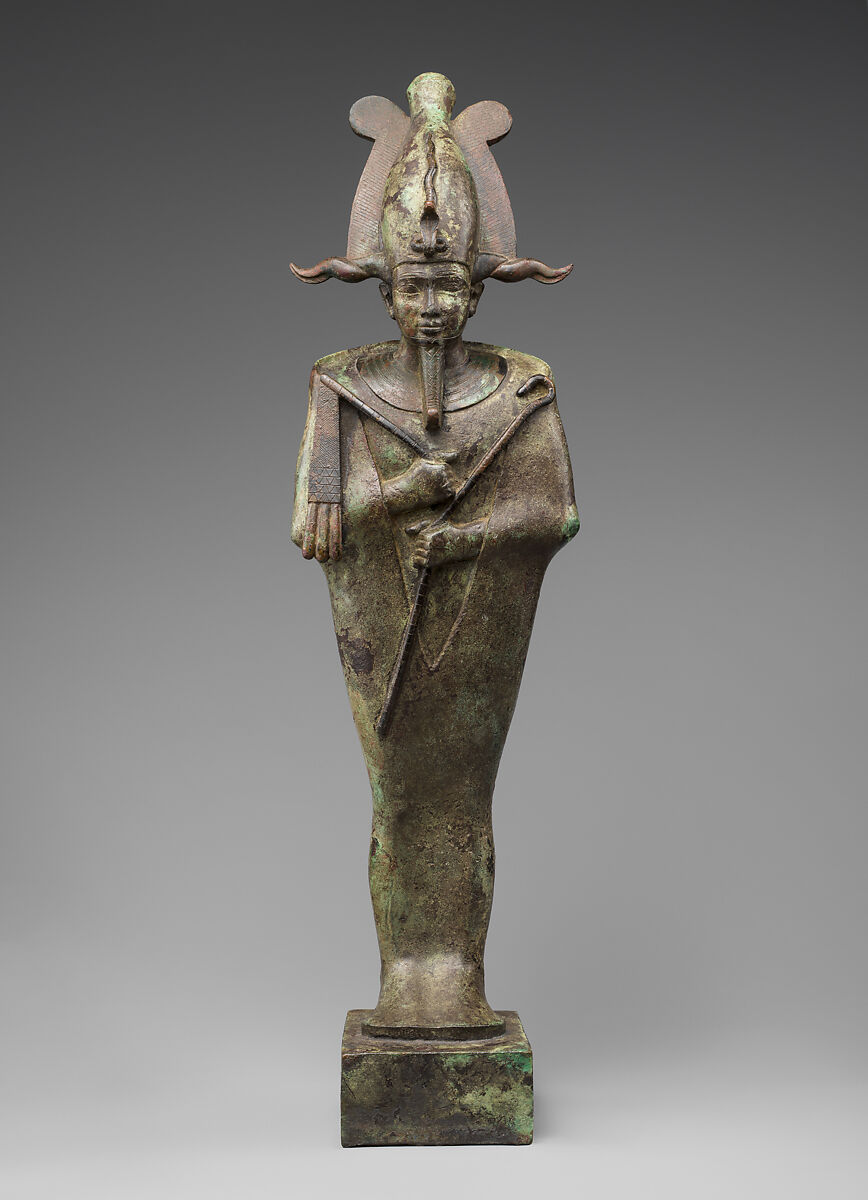
On the front of his tall crown is a uraeus, a cobra poised to strike at his enemies. The horns may link him to the sun god, who is sometimes represented as a ram-headed deity at the end of the day or during the night.
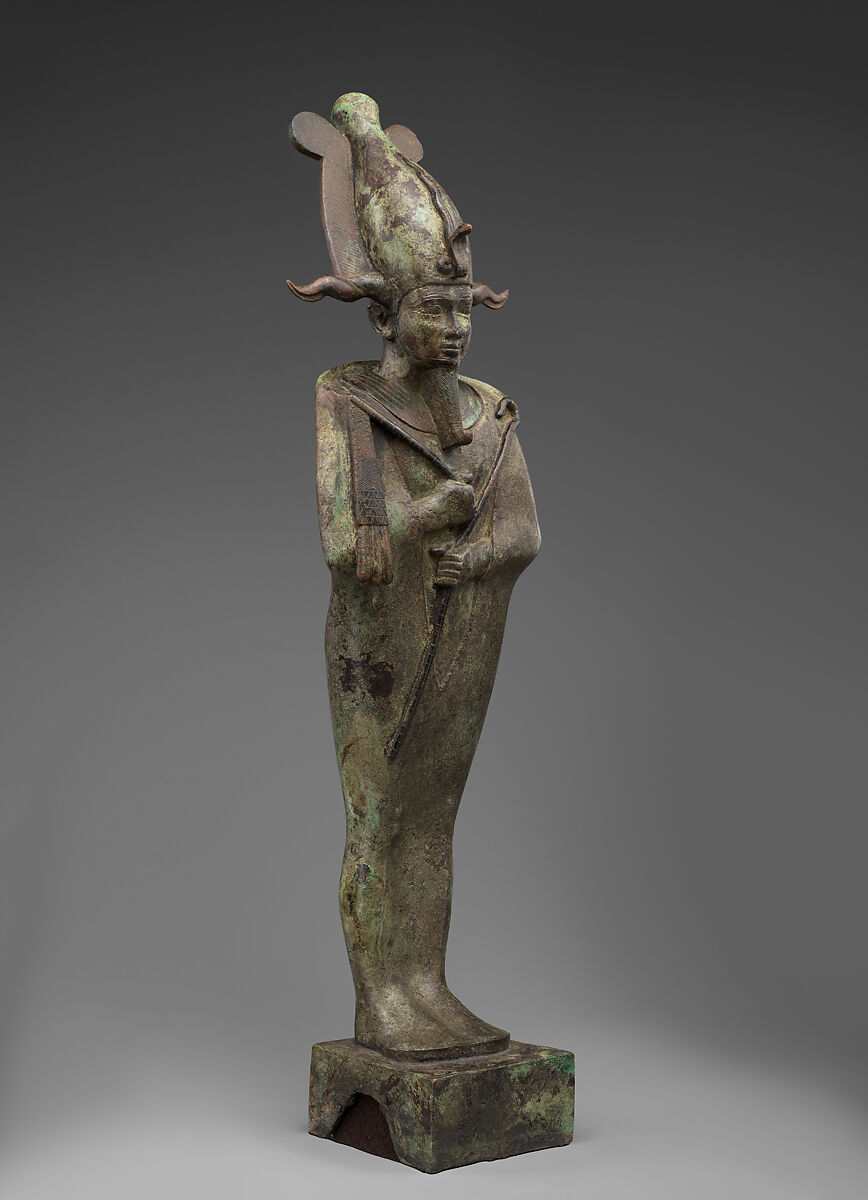
By the first millennium B.C., statues and statuettes of Osiris were offered widely, reflecting both the importance of the god and a shift in ritual practices.
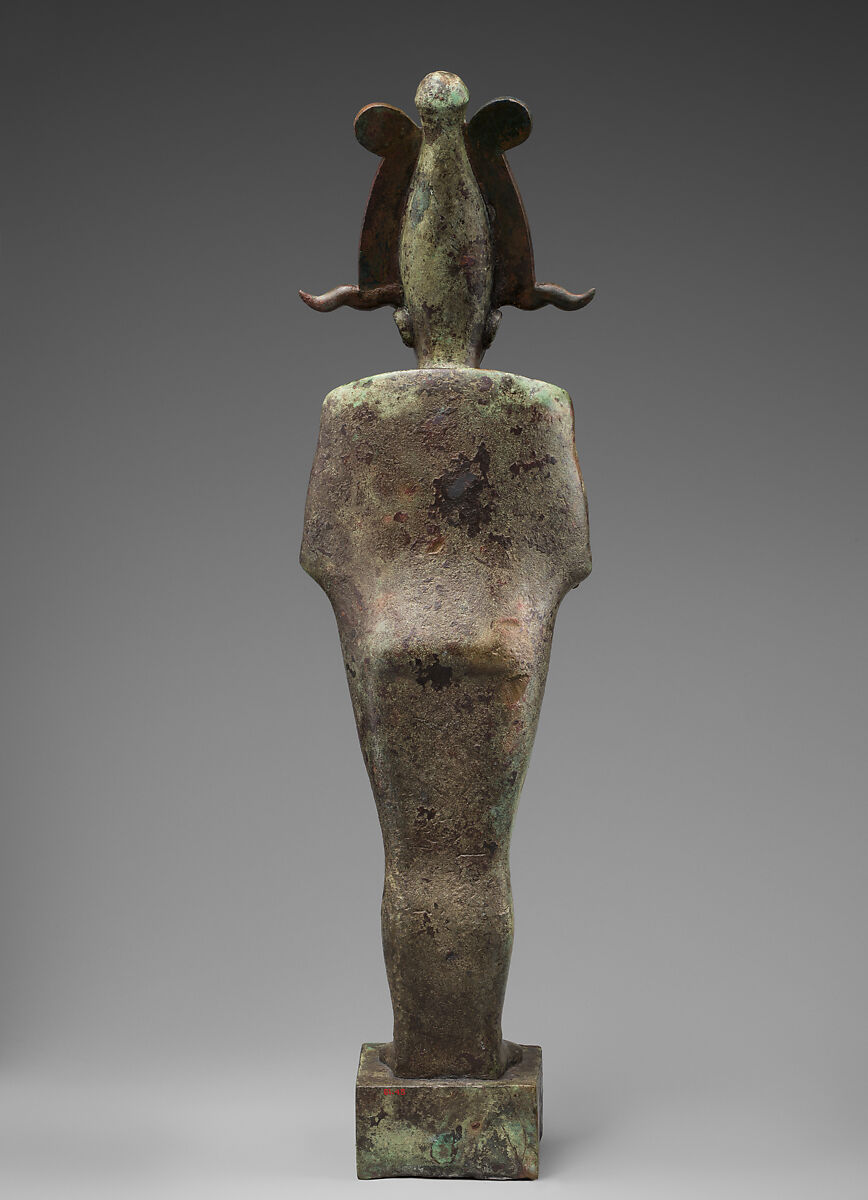
Many were placed in temples and shrines dedicated to him, though some appear as offerings in contexts whose purpose remains unclear. This particular example is unusually large, though it is not the largest known bronze representation of Osiris.
